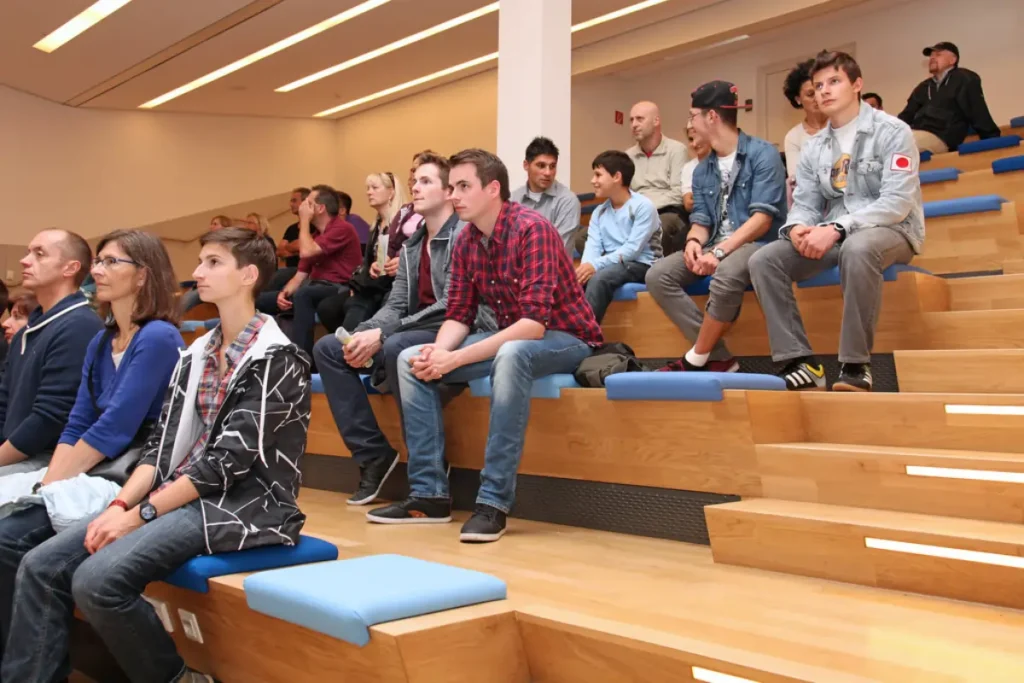No products in the cart.

Germany is one of the countries that international students love to travel to for higher education, not just because it offers scholarship opportunities but also because of the quality of education and standards that the universities in the country set.
The German educational system is reputed for excellence and continues to be among the pacesetters in Europe to this day. Many countries around the world value degrees from universities in Germany due to students’ exposure to a balance of theoretical work and practical applications. There are over 450 accredited universities in the European nation, and based on the latest Global Universities rankings collated by USN, we will be listing the 10 best higher institutions in Germany and sharing vital details about five of them.
- Humboldt University of Berlin
- University of Munich
- Ruprecht Karls University Heidelberg
- Free University of Berlin
- Technical University of Munich
- University of Hamburg
- University of Bonn
- University of Gottingen
- Eberhard Karls University of Tubingen
- Technische Universitat Dresden
- Humboldt University of Berlin
1. Humboldt University of Berlin

Founded in 1810, Humboldt-Universität zu Berlin (Humboldt University of Berlin) comprises many academic divisions, including faculties of arts and humanities, economics and business administration, and law. This higher institution does not charge students tuition; however, they pay a relatively low semester fee.
At the university, major interdisciplinary research centers are being operated, and they include the August Boeckh Centre for Antiquity and the Georg-Simmel Center for Metropolitan Studies. The academic calendar is semester-based, and the primary language of instruction at Humboldt-Universität is German. It has agreements with more than 190 institutions worldwide, like the University of Singapore, Princeton University (USA), and Universidade de São Paulo (Brazil).
2. University of Munich
The University of Munich is a public institution established in 1472. It is situated in Munich – the capital of Bavaria and one of the largest cities in Germany. LMU Munich, as the university is sometimes called, has its “HighTechCampus” in the southeast part of Munich.
Students generally do not pay tuition, but some of the school’s English-taught degree programs charge tuition. A limited amount of publicly sponsored accommodation is available for students through Studentenwerk München or the Munich Student Union.
The university has 18 academic divisions, including faculties of business administration, medicine, and social sciences. It offers more than 200 degree programs. About 50 research centers, such as the Center for Neuropathology, the Center for Quantitative Risk Analysis, and the Munich Center for Ethics, are located at this higher institution. The primary language of instruction is German, and its academic calendar is semester-based.
3. Ruprecht Karls University Heidelberg
Heidelberg University, located in Heidelberg, Baden-Württemberg, is Germany’s oldest university, with three campuses. It was founded in 1386, and less than 20 percent of the total population is made up of international students.
As is generally the case with public universities in Germany, this higher institution does not charge students for tuition; instead, they pay relatively low semester fees. Ruprecht Karls University Heidelberg has a dozen academic divisions: theology, law, philosophy, modern languages, economics, and social sciences, behavioral and cultural studies, math and computer science, chemistry and earth sciences, physics and astronomy, and biosciences, as well as two medical faculties.
The university collaborates with several outside organizations on research activities, including the German Cancer Research Centre, the European Laboratory for Molecular Biology, and the Heidelberg Institute for Theoretical Studies. One research achievement associated with Heidelberg University is the creation of the Bunsen burner.
4. Free University of Berlin
The Free University of Berlin is a public institution that dates back to 1948. It has three main campuses, all situated in Berlin. Student accommodation is not located on campus and is managed by private organizations in partnership with the university.
There are 11 academic departments, a joint medical school, and three central institutes, all of which combine to offer no less than 180 bachelor’s and master’s degree programs, as well as around 50 doctoral programs.
Its master’s courses are English-taught and in the fields of computational sciences, international health, and North American studies. Around 600 international scholars and scientists attend the university annually to serve in teaching and research roles. Also, it is important to note that Free University and Humboldt-Universität zu Berlin jointly operate the Charite–Medical University of Berlin, which enrolls students affiliated with both universities.
5. Technical University of Munich
The Technical University of Munich (TUM) is a public institution with three campuses in Bavaria, Garching, and Weihenstephan. It was founded in 1868 and currently has 13 academic divisions, some of which are architecture, chemistry, civil, geo, and environmental engineering.
The Garching campus boasts the largest enrollment and is home to TUM’s natural sciences and technology divisions. The entire technical university offers more than 150 degree programs, and the primary language of instruction is German. The tertiary institution has several research centers, including the Munich Center for Technology in Society, the Walter Schottky Institut for studying nanotechnology and nanomaterials, and the Hans Eisenmann-Zentrum for agricultural sciences.
The Erlenmeyer flask, a piece of equipment commonly found in chemistry laboratories, was named after one of TUM’s founding professors. It is normally used to measure and store liquids.